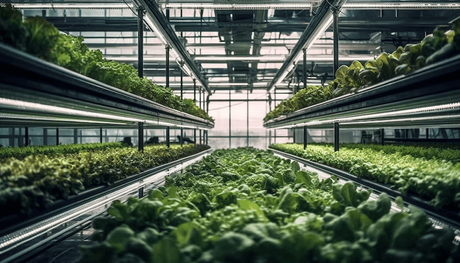The greenhouse industry, whether aimed at high-efficiency food production or boutique horticulture, is constantly evolving. As growers strive for greater yields, better ergonomics, and improved workflows, innovations in infrastructure become crucial. Among these innovations, rolling greenhouse tables have emerged as one of the most transformative upgrades in controlled environment agriculture. But for growers who already operate greenhouses—some for years or even decades—a crucial question arises: Can you retrofit your existing greenhouse with rolling tables?
This isn't just a question of logistics or mechanics; it also involves cost-efficiency, compatibility, productivity, and even the long-term vision for the cultivation space. Retrofitting implies working within the constraints of an already established structure, which is both an opportunity and a challenge. Let's explore how an existing setup can evolve from traditional stationary configurations to a more fluid and dynamic layout with rolling systems—particularly focusing on their applications in the realm of commercial greenhouse benches.
The Motivation Behind Retrofitting
Every greenhouse operator—be it a small-scale farmer or a large commercial grower—wants to extract the maximum value from the space available. Initially, a fixed benching system might seem adequate, offering basic functionality and dependable support for trays, containers, or propagation modules. However, over time, limitations start to surface. These include difficulty accessing certain areas, excessive labor in moving plants or equipment, and unoptimized airflow and light exposure.
A retrofit involving rolling greenhouse tables can solve many of these issues. By enabling horizontal mobility, rolling benches eliminate wasted aisle space. Suddenly, 80–90% of the floor area becomes usable growing space compared to 60–70% in static layouts. Furthermore, rolling systems promote operational flexibility, allowing tasks like planting, pruning, irrigating, and harvesting to become faster and more efficient.
And yet, the leap from static metal greenhouse benches to a dynamic rolling system is not trivial. The process involves a critical evaluation of spatial dimensions, support structures, and integration potential with existing irrigation setups—particularly in systems like ebb and flow rolling benches where precise water control is essential.
Assessing the Existing Structure: The Starting Point
The journey of retrofitting always begins with a diagnosis of the current greenhouse structure. This includes measuring the internal width, evaluating the levelness of the flooring, identifying anchor points for existing grow bench systems, and determining available clearance height.
For older greenhouses—especially those built on compacted soil rather than poured concrete—there’s often a need for floor stabilization. Rolling benches function best on level tracks or rails. If the existing floor is uneven, the system may operate poorly or require excessive adjustments, defeating the purpose of streamlining workflow.
Meanwhile, roof height and ventilation systems must be considered. Retrofitting usually involves raising the plants higher off the ground, especially if deep flood trays or supplemental lighting is added underneath the benches. Will this affect ventilation patterns? Will it alter how natural or artificial light hits the canopy? These aren't minor questions—they directly influence yield outcomes in both leafy greens and fruiting crops.
Moreover, existing greenhouses may contain overhead trellising, irrigation piping, or sensor cabling that must be repositioned. Retrofitting doesn't mean simply sliding in new equipment—it requires recalibration of the entire growing environment.
Retrofitting the Infrastructure: Bench Anchoring and Mobility
Once spatial and environmental evaluations are complete, the next step involves physical modification. Most commercial greenhouse benches in older greenhouses are fixed to the floor or laid out without mobility features. Retrofitting them with rolling systems means either replacing the old benches entirely or repurposing them with new supports and tracks.
Steel and aluminum rolling bench kits come in modular formats, which makes them easier to assemble within constrained spaces. These metal greenhouse benches are designed to glide laterally using rolling bars and gear tracks. In greenhouses with narrow aisles, these systems let growers slide benches side to side, creating a temporary aisle wherever it's needed—without permanently sacrificing floor space.
The installation process typically starts by laying galvanized steel rails along the length of the greenhouse. Each rail must be perfectly parallel, anchored firmly, and aligned using laser leveling tools to prevent drift or misalignment over time. Then come the supports—usually tubular steel or aluminum frames that attach to rolling casters or gliding rollers. These supports are either welded or bolted into trays capable of supporting up to several hundred pounds per square meter, depending on the crop.
In short, retrofitting an existing greenhouse with rolling tables often involves stripping out old grow bench systems, preparing the subfloor, anchoring new tracks, and assembling bench frames one by one. While it may sound disruptive, many greenhouse operators report that the long-term efficiency gains far outweigh the temporary inconvenience.
Irrigation Integration: Especially with Ebb and Flow Rolling Benches
The transition to ebb and flow rolling benches represents a particularly advanced stage of retrofitting. These systems combine horizontal mobility with precision irrigation. Instead of watering from above, ebb and flow benches use flood trays where nutrient-rich water floods the root zone for a fixed period and then drains away—promoting healthier root development and minimizing water waste.
Retrofitting an existing greenhouse for such a system requires careful plumbing. You'll need to install water supply lines that connect to each bench module and drainage pipes that handle runoff efficiently. This often means adding a sub-floor drainage grid or rerouting existing piping systems.
Moreover, the trays used in ebb and flow systems need to be perfectly level to ensure even water distribution. This requires recalibration at the micro-level. Unlike spray irrigation, where minor angle deviations go unnoticed, ebb and flow systems reveal flaws instantly—uneven flooding or dry spots are immediate consequences of installation shortcuts.
Greenhouses equipped with fixed metal greenhouse benches often lack this level of micro-control. Therefore, when retrofitting, the upgrade to ebb and flow rolling tables is not just a change in hardware—it's a shift in irrigation philosophy. It's more efficient, more controlled, but also more demanding in terms of precision and maintenance.
Workflow Optimization and Labor Efficiency
One of the key reasons growers consider retrofitting is the promise of labor savings. Rolling greenhouse tables drastically reduce the time and effort involved in accessing and working with crops. Tasks that once required bending, reaching, or maneuvering through narrow aisles can now be done comfortably and quickly.
For instance, harvesting becomes more linear—workers simply slide benches aside to create space where it's needed. Cleaning routines also become more systematic. Since benches are mobile, entire rows can be shifted to one side, exposing bare floor areas for pressure washing or vacuuming.
In commercial operations with multiple crop cycles and staging, mobility allows certain rows to be isolated for different treatments—fungicide application, harvesting, or nutrient adjustment—without affecting the rest of the greenhouse.
This flexibility is particularly important in hydroponic greenhouses, where nutrient imbalances can quickly spread across static systems. Grow bench retrofits that allow for dynamic spacing give growers more autonomy in crop management, reducing stress and increasing precision.
Structural Compatibility and Limitations
Despite the benefits, not all greenhouses are ideal candidates for retrofitting. Some older structures have permanent internal supports or columns that obstruct lateral movement. Others lack the vertical space to accommodate taller rolling bench systems, especially if integrating flood trays or lighting racks beneath them.
In cold climates, greenhouses with heating pipes along the floor may conflict with the layout of commercial greenhouse benches on rollers. Similarly, greenhouses with curved Gothic roofs or uneven concrete slabs might require additional reinforcements, adding to the overall cost.
Structural integrity must also be evaluated. Rolling systems are heavier than traditional benches, especially when filled with water, soil, or substrate. If your greenhouse was not originally engineered for such loads, reinforcing the base—either through poured concrete, steel mesh, or perimeter anchoring—may be necessary.
Ultimately, the decision to retrofit should not be made solely on inspiration or short-term need. It must follow a technical feasibility study, ideally with input from structural engineers, bench system manufacturers, and irrigation consultants.
Cost-Benefit Analysis of Retrofitting
While upfront costs are higher than simply maintaining a traditional system, rolling tables offer one of the highest returns on investment in greenhouse infrastructure. Increased yield per square foot, reduced labor costs, and lower water waste quickly justify the expense.
Depending on the brand and features, a single rolling greenhouse table module can range from $200 to $600 or more. When installed across an entire commercial bay, the costs add up—but so do the benefits.
In hydroponic operations or propagation centers where plant turnover is rapid and spacing density is critical, the additional usable floor space can result in 20–30% higher productivity. For high-value crops like cannabis, strawberries, or leafy greens, that margin can be decisive in profitability.
Many commercial growers find that retrofitting with ebb and flow rolling benches allows them to delay or eliminate the need to build additional greenhouses—an enormous saving in capital expenditure. With the right design, a single retrofitted structure can serve multi-crop cycles, R&D, and seedling production all within one space.
Future-Proofing the Greenhouse
Perhaps the most underappreciated advantage of retrofitting is that it brings an existing facility up to future standards. Greenhouse agriculture is increasingly data-driven and automated. Sensor systems for pH, EC, temperature, and light are becoming the norm. Many of these systems are easier to integrate with modern grow bench designs that include cable trays, modular irrigation, and automation-ready frameworks.
Moreover, rolling greenhouse tables are compatible with robotic transplanters, AI-driven harvesters, and vertical lifting systems. Even if you don't plan on full automation today, retrofitting lays the foundation for it tomorrow.
In competitive agricultural sectors, those who adapt and optimize tend to outpace those who maintain the status quo. Upgrading an old greenhouse with mobile infrastructure is more than an aesthetic decision—it's a strategic one that influences operational scale, efficiency, and flexibility.
Conclusion: Rolling Into the Future
Retrofitting an existing greenhouse with rolling tables is not only feasible—it's increasingly necessary for growers looking to stay competitive. It turns a static space into a dynamic one, unlocking new levels of productivity, efficiency, and crop control. From basic modular conversions to advanced ebb and flow rolling benches, the spectrum of solutions offers flexibility for different budgets and goals.
Yet, this transformation isn't plug-and-play. It demands structural evaluation, careful planning, and potentially significant investment. But for those who take the leap, the rewards are tangible: more plants per square foot, smoother workflows, healthier root systems, and a greenhouse that's not just functioning—but thriving.
If you're ready to roll forward, the retrofit might just be the smartest investment your greenhouse ever sees.
 English
English








